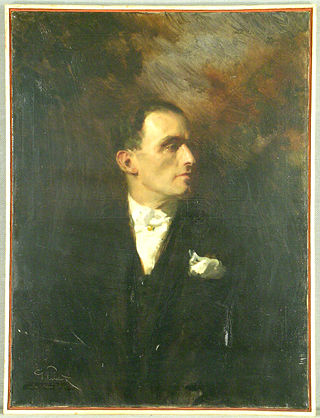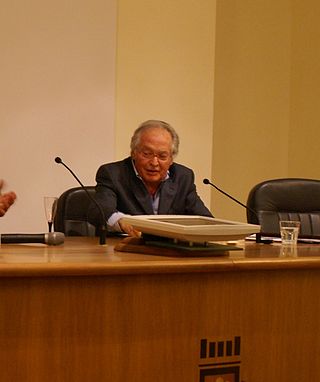The Palandomus invented in 1919 by architect Mario Palanti, consists of a cement block of 18x18x36cm made with the vibration system, to serve as the cellular element of construction, being designed with a particular shape "hermaphrodite", which allows placement in any sense, without the constraints of location if not horizontal.[ clarification needed ] In fact the thin ledge, ribs protrusion allow to leave the walls without plaster, but at the same time, ensure the maximum bonding of the elements. The Palandomus is sufficient to withstand up to safety limit of 70 meters in elevation, allowing, without special precautions, the installation of jack arch to openings doors and windows and of dry archivolt.
Direct memory access (DMA) is a feature of computer systems that allows certain hardware subsystems to access main system memory independently of the central processing unit (CPU).

A memory management unit (MMU), sometimes called paged memory management unit (PMMU), is a computer hardware unit having all memory references passed through itself, primarily performing the translation of virtual memory addresses to physical addresses.

x86-64 is a 64-bit version of the x86 instruction set, first released in 1999. It introduced two new modes of operation, 64-bit mode and compatibility mode, along with a new 4-level paging mode.

The Cimitero Monumentale[tʃimiˈtɛːro monumenˈtaːle] is one of the two largest cemeteries in Milan, Italy, the other one being the Cimitero Maggiore. It is noted for the abundance of artistic tombs and monuments.

Futurist architecture is an early-20th century form of architecture born in Italy, characterized by long dynamic lines, suggesting speed, motion, urgency and lyricism: it was a part of Futurism, an artistic movement founded by the poet Filippo Tommaso Marinetti, who produced its first manifesto, the Manifesto of Futurism, in 1909. The movement attracted not only poets, musicians, and artists but also a number of architects. A cult of the Machine Age and even a glorification of war and violence were among the themes of the Futurists - several prominent futurists were killed after volunteering to fight in World War I. The latter group included the architect Antonio Sant'Elia, who, though building little, translated the futurist vision into an urban form.

The architecture of Argentina can be said to start at the beginning of the Spanish colonisation, though it was in the 18th century that the cities of the country reached their splendour. Cities like Córdoba, Salta, Mendoza, and also Buenos Aires conserved most their historical Spanish colonial architecture in spite of their urban growth.
The following tables compare general and technical information for a number of file systems.

Bruno Zevi was an Italian architect, historian, professor, curator, author, and editor. Zevi was a vocal critic of "classicizing" modern architecture and postmodernism.

Mario Palanti was an Italian architect who designed important buildings in the capital cities of both Argentina and Uruguay.

The Palazzo della Farnesina is an Italian government building located between Monte Mario and the Tiber River in the Foro Italico area in Rome, Italy. Designed in 1935, it has housed the Italian Ministry of Foreign Affairs since its completion in 1959. A reference to "La Farnesina" is often to be intended as a metonymy for the hosted institution, namely the Ministry itself.
Vico Mossa was an Italian architect and writer. He is best known for his buildings in Sassari, notably the restoration of the Teatro Civico, Palazzo Bosazza, Hotel Turritana, Palazzo dell'Upim, Chiesa di San Vincenzo, and Collegio Marianum on the Piazza Duomo. He was the author of many works on local and Sardinian architecture.

Abbas Gharib,, is an Italian-based architect of Iranian origin. His approach to planning and design, which goes beyond the traditional modernism or contemporary format, has made him well known as an influential figure in the research, practice and teaching of post-contemporary art and architecture.

Carmine Benincasa was an Italian art critic and art historian professor.
The Edicola Palanti inside the Cimitero Monumentale di Milano, work by architect Mario Palanti built in 1924–28, become Civico Mausoleo to honorable citizens of Milan in on 4 February 1981. Famous graves inside are: Hermann Einstein, Walter Chiari, Giovanni D'Anzi, Virgilio Ferrari, Emilio Guicciardi, Paolo Grassi, Franco Russoli, Alfredo Bracchi, Maria Bonizzi, Girolamo Palazzina, Innocenzo Gasparini, Ciro Fontana, Fernanda Wittgens, Franco Parenti, Angelo Cucchi, Carlo Mariano Colombo, Luigi Berlusconi.

Giovanni Antonio Antolini was an Italian architect and writer.

Vincenzo Eusebi is an Italian engineer, architect and designer. Eusebi studied engineering and architecture at the Marche Polytechnic University in Ancona.

Nvidia DGX is a line of Nvidia-produced servers and workstations which specialize in using GPGPU to accelerate deep learning applications. The typical design of a DGX system is based upon a rackmount chassis with motherboard that carries high performance x86 server CPUs. The main component of a DGX system is a set of 4 to 16 Nvidia Tesla GPU modules on an independent system board. DGX systems have large heatsinks and powerful fans to adequately cool thousands of watts of thermal output. The GPU modules are typically integrated into the system using a version of the SXM socket.

Eugenio Gerli was an Italian architect and designer. In an intense working life spanning more than six decades, Eugenio Gerli explored many different areas of his profession. He built villas, apartment blocks, office blocks, factories, banks and stores, and also restored historic buildings. He often completed his works with custom-made interiors and furniture.This diverse range of projects inspired his industrial design and today many have become icons, like the S83 chair, the PS 142 armchair Clamis, the Jamaica cabinet and the Graphis System.

Mario Rossi (1897-1961) was an Italian architect and notable contributor to 20th-century Islamic architecture.